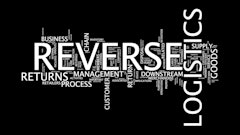Palo Alto, CA Ñ March 5, 2003 Ñ Ever feel like your company could move twice as fast and be three times as profitable if only you and your colleagues could all know what each other was working on so you could avoid duplicated effort or take advantage of each others knowledge to make new breakthroughs?
If so, you're not alone. In fact, according to a recent Harris Interactive survey, 87 percent of workers in large organizations duplicate work, make mistakes or miss opportunities simply because they don't know what others in the organization are doing. That's despite the fact that some analysts believe that companies have invested upwards of $3 billion in collaboration tools to get people talking to one another.
Trouble is, those tools do little to help employees find the relevant experts within their enterprises, those of their colleagues who could actually provide the useful knowledge the employees are seeking.
But now one software provider is looking to fill this "collaboration gap." The company Tacit has unveiled a new enterprise software solution intended to proactively facilitate interactions between users across large, complex or information-intensive enterprises.
Tacit said its ActiveNet solution, which debuted in February at the DEMO 2003 conference in Scottsdale, Ariz., is designed to make collaboration happen within an enterprise by automatically identifying who should be working together, bringing them together and initiating discussions.
The provider asserted that ActiveNet differs from other collaboration products because it focuses on "who" should be collaborating versus "how." The product is designed to work with existing workspace and messaging software that provide online gathering places and message transport but that do nothing to help workers identify people with the relevant, expertise with whom they should be collaborating.
"Collaboration tools tell people how to work together Ñ they make collaboration possible," said David Gilmour, Tacit's president and CEO. "ActiveNet tells people who to work with, when and why, [and] that's what makes collaboration actually happen."
ActiveNet, which is currently in beta release, is a browser-based application. The software trolls the content in enterprise e-mail, instant message, electronic bulletin boards and virtual workplace environments, as well as enterprise applications such as enterprise resource planning (ERP) or customer relationship management (CRM) systems to gather clues as to employees' areas of expertise. The solution includes lightweight XML-based applications, or "connectors," that tap into external systems such as OpenText, Documentum and Lotus Notes to discover new user activity and content.
The solution catalogs that knowledge and then allows other employees to proactively search for specific types of knowledge within their organizations, identifying those workers who are most likely to have certain expertise or be able to answer a certain type of question.
Alternatively, an employee can set up a "hotlist," using a search agent to continuously look for people in the enterprise who are working on certain topics and whom the employee can then invite to collaborate using the software tools already in place at the company, such as e-mail or instant messaging, or to move into workspaces in external collaboration applications such as Groove and eRoom.
Further, the solution captures the subsequent collaboration, analyzes it and indexes it for re-use by the software. The application also can help users locate relevant content in a document database or network file repository, and to find previous conversations or previously answered questions.
Andrew Dunning, marketing director at Tacit, said that one major aerospace company has purchased the provider's solution because the company has multiple teams working on related projects and teams with expertise or experience relevant to the work of other groups of employees. "For example, someone in Team A would be able to identify someone in Team B who has the materials expertise to help them design the material layering to get the properties they want on a particular wing they're designing," Dunning said.
Or, the company can use the tool in situations when one team has to make a decision that could affect other colleagues' work, such as changing the specifications on a particular component. The tool would allow the team to identify the affected colleagues based on their having mentioned or discussed that particular piece or specification.
Another company, a pharmaceutical firm, is using the tool to facilitate its product development efforts. In one instance, a New Jersey-based researcher for the company was going to set up a lab to synthesize a particular chemical he needed for his experiments. The scientist queried the system to determine whether anyone in the company had experience setting up such a lab and discovered that another researcher in Frankfurt, Germany, had already developed the chemical, had produced a quantity of it and was looking for something to do with it. The German researcher wound up shipping the chemical to New Jersey, saving the company enough in development costs to pay for the Tacit solution, according to Dunning.
Tacit said that ActiveNet, which is due to be generally available in early April, is currently under evaluation by several Global 500 companies as well as a U.S. government agency.
For more information on information sharing and analysis, see the Global Enabled Supply Chain Series article "Knowledge Management" in the August/September issue of iSource Business.










![Pros To Know 2026 [color]](https://img.sdcexec.com/mindful/acbm/workspaces/default/uploads/2025/08/prostoknow-2026-color.mduFvhpgMk.png?ar=16%3A9&auto=format%2Ccompress&bg=fff&fill-color=fff&fit=fill&h=135&q=70&w=240)




